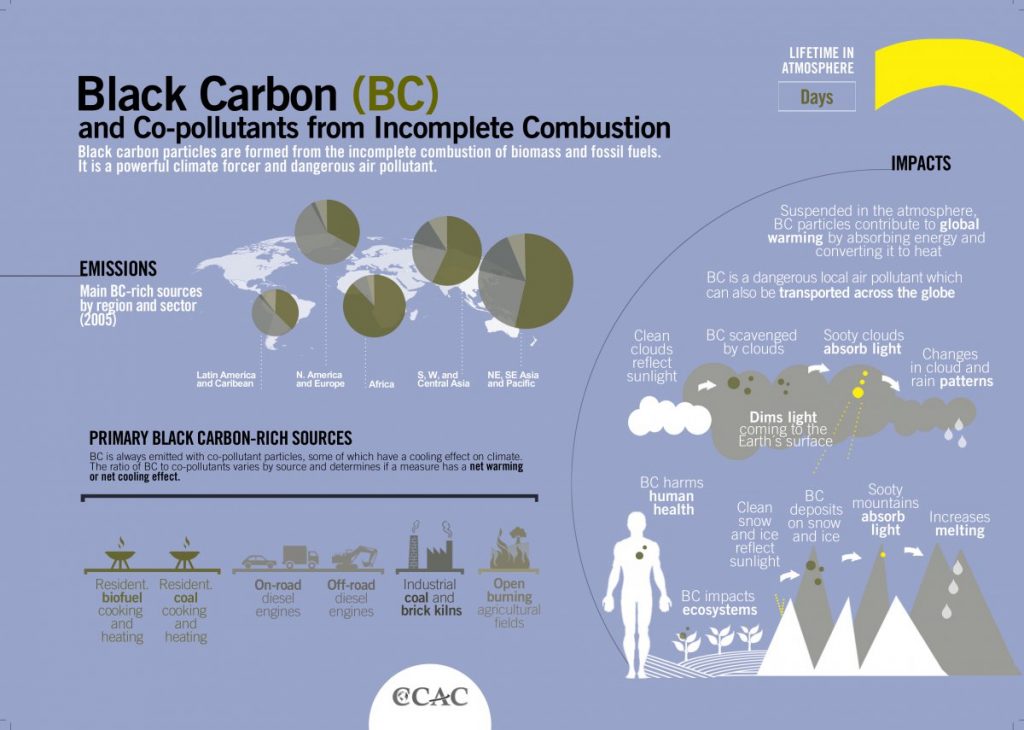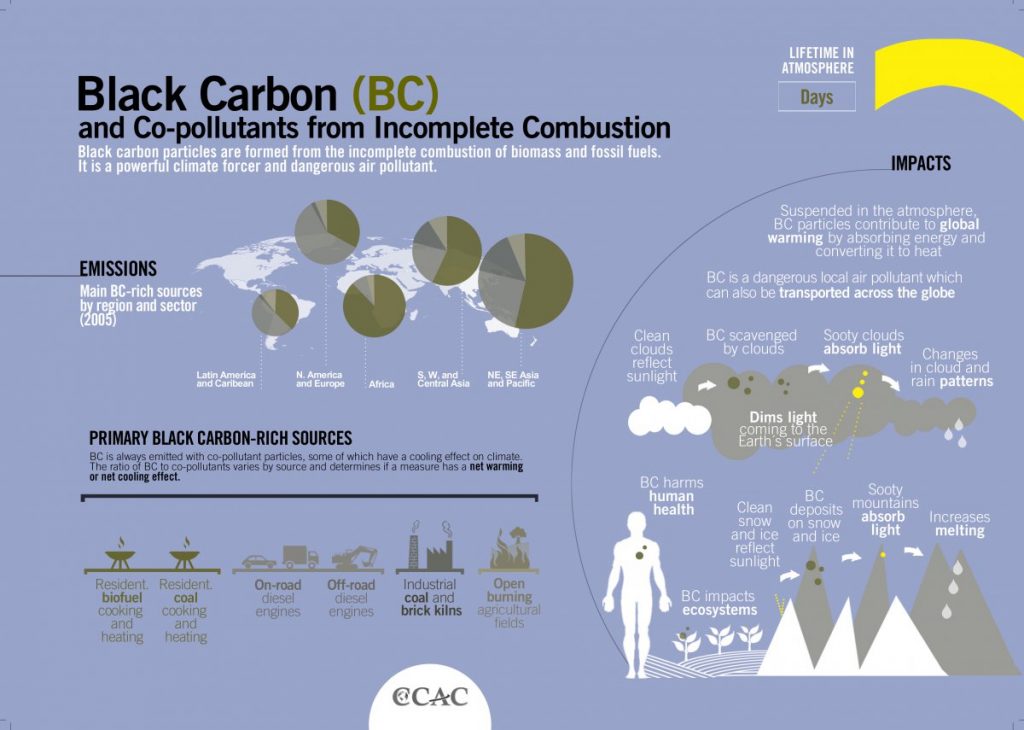CURRENT AFFAIRS
Get the most updated and recent current affair content on Padhaikaro.com
Black Carbon level at Himalayan glacier
- Vaid's ICS, Lucknow
- 22, Dec 2021

Why in News?
A recent study by scientists at the Wadia Institute of Himalayan Geology (WIHG) states that the black carbon concentrations near the Gangotri glacier rose 400 times in summer.
What is Black carbon?
It is a potent climate-warming component of particulate matter formed by the incomplete combustion of fossil fuels, wood and other fuels. Complete combustion would turn all carbon in the fuel into carbon dioxide (CO2), but combustion is never complete and CO2, carbon monoxide, volatile organic compounds, and organic carbon and black carbon particles are all formed in the process. The complex mixture of particulate matter resulting from incomplete combustion is often referred to as soot.

KEY FIGURES
| 460-1,500x | 4–12 days | 6.6 million tonnes | 58% |
| Black carbon has a warming impact on climate 460-1,500 times stronger than CO2 per unit of mass | The average atmospheric lifetime of black carbon particles is 4-12 days | About 6.6 million tonnes of black carbon were emitted in 2015 | Household cooking and heating account for 58% of global black carbon emissions |
BLACK CARBON – 80% emissions reduction potential globally by 2030
| HOUSEHOLD ENERGY | Replace traditional cooking to clean burning modern fuel cookstoves
Replace traditional cooking and heating with clean-burning biomass stoves Eliminate kerosene lamps Replace lump coal with coal briquettes for cooking and heating Replace wood stove and burners with pellet stoves and boilers |
| INDUSTRIAL PRODUCTION | Modernize traditional brick kilns to vertical shaft brick kilns
Modernize coke ovens to recovery ovens |
| TRANSPORT | Use diesel particular filters for road and off-road vehicles
Fast transition to Euro VI/6 vehicles and soot-free buses and trucks Eliminate high-emitting diesel vehicles |
| AGRICULTURE | Ban open-field burning of agricultural waste |
| FOSSIL FUELS | Capture and improve oil flaring and gas production |
| WASTE MANAGEMENT | Ban open burning of municipal waste |
IMPACTS ON VEGETATION AND ECOSYSTEMS:
Black carbon can affect the health of ecosystems in several ways: by depositing on plant leaves and increasing their temperature, dimming sunlight that reaches the earth, and modifying rainfall patterns.
Changing rain patterns can have far-reaching consequences for both ecosystems and human livelihoods, for example by disrupting monsoons, which are critical for agriculture in large parts of Asia and Africa.
SOLUTIONS:
Black carbon’s short atmospheric lifetime, combined with its strong warming potential, means that targeted strategies to reduce emissions can provide climate and health benefits within a relatively short period of time.
The Coalition supports implementation of control measures that, if globally implemented by 2030, could reduce global black carbon emissions by as much as 80% (UNEP & WMO 2011).
Several of these emission reductions could be achieved with net cost savings. Adopting these measures would have major positive co-benefits for public health, especially in the developing world.